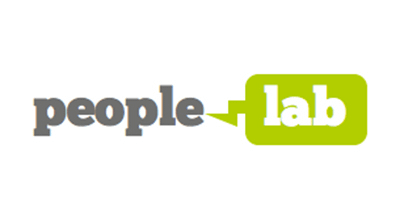Social Media Week kicks off next week, with events happening around the globe…. We’ll be going along to the Simply Smile Event in London on Monday 23rd, which has a fantastic programme for anyone interested in social media used inside organisations.
This is a topic we’re really passionate about and we’re just about to launch a brand new piece of research looking into the impact of social media used within organisations on employee engagement and wellbeing.
Social media is increasingly becoming a significant part of our lives: with an estimated 60% of all Internet users accessing some form of social networking (CIPD, 2012). In just 10 years Facebook has grown from a few hundred users, to over 1.15 billion active monthly users. Given this rapid rise in the use of social media we are only just beginning to ask questions about how social media impacts our psychological wellbeing: can using social media make us happier? Or does it make us more miserable?
Research results are currently mixed
Given the emerging nature of research into the psychological impacts of social media it’s of little surprise that a clear picture, or indeed any picture, has yet to emerge. Kross and Verduyn (2013), in their groundbreaking study, found a link between increased Facebook use and a decrease in subjective wellbeing over a two-week period. However, when looking specifically at self-esteem, Toma (2013) found that Facebook use is linked to increases in self-esteem when spending time viewing your own profile. The research is very mixed and currently its hard to draw any conclusions.
Whilst we are only just beginning to ask questions about the impact of social media on wellbeing, this is particularly acute when looking at social media used within the confines of an organisation: Enterprise Social Media (ESM) or sometimes referred to as Enterprise Social Networks (ESN). Until very recently, most companies have focused their social media strategies on building relationships with customers, rather than with their employees (Silverman 2013). A study by Oracle (2013) found that whilst 86% of companies have a Facebook site, closely followed by 82% with a LinkedIn account, just 18% having a specific ESN platform. This highlights the gap between companies adopting externally facing social media and internal ESN. However this gap looks set to close with many commentators arguing that ESN will become as essential as telephones and email are today.
Organisations will become reliant on their enterprise social media
It seems reasonable to propose that over the next few years, organisations will become ever more reliant on their internal social network. At People Lab we’re interested in creating great places to work, understanding how we can improve employees wellbeing, engagement and happiness at work. So we’re launching a research progamme to begin to investigate this to topic and find out if, and how, enterprise social media impacts employee engagement and wellbeing.
To date research into the impacts of ESM has looked at how employees use the tools, rather than at psychological impacts. For example, in their research Bradley and McDonald (2011) identify six emerging patterns of use for ESM:
- Expertise location – which enables employees to find the right person or solution to tackle a problem or issue.
- Collective intelligence – which refers to the ability to collaborate in a group to solve issues
- Emergent structures – which refers to the building of online communities which tend to form on a more informal basis
- Interest cultivation – which refers to the use of ESM to bring together like-minded people.
- Mass co-ordination – which is when is when a community is created quickly to spread messages virally.
- Relationship leverage – refers to the ability to gain value from an online network and online relationships..
Could the way in which employees use ESM impact on their engagement and wellbeing? To help answer this question we’re going to be using a psychological framework called Self-Determination Theory.
Self-Determination Theory (SDT), developed originally by Deci and Ryan, is a positive psychology theory of motivation which argues that individuals endeavor to be self-governed, enabling them to behave in ways which are “volitional, intentional and self-initiated”. SDT argues that there are two types of motivation:
- intrinsic motivation which involves engaging in an activity for its own sake, because we find it interesting, or enjoyable or pleasing
- extrinsic motivation which involves engaging in an activity because of an external factor such as rewards or the avoidance of punishment
SDT states that there are three basic psychological needs, which must be met in order to experience wellbeing. And that meeting these three basic needs helps to facilitate intrinsic motivation. They are:
- Autonomy
- Competence
- Relatedness
The Peoplelab Research
Our research is going to look at the link between using ESM (or not) and autonomy, competence and relatedness experiences. We want to find out if using ESM could help to satisfy these basic needs? And if using ESM satisfies these basic needs, will we see an increase in employee wellbeing, and engagement resultant from using ESM? The findings from the research could have far reaching implications for the ways in which we use ESM within the workplace in the future.
We’re really excited about launching this ground-breaking research. If you’re going along to the Simply Smile Event, we’d love to hear your thoughts on this topic so please come and say hello. And if you can’t make it to the event we’d still love to hear what you think about this topic and research so please get in touch. We’re also looking for organisations to get involved with the research. We’d love to hear from you if you are interested in getting involved: we need to speak to companies who both have implemented some kind of ESM but also those companies who have not….. If you’re interested in finding out more please drop Emma a line at emma@peoplelab.co.uk.
References
BRADLEY, A. and MCDONALD, M. (2011) The social organisation; how to use social media to tap the collective genius of your customers and employees. Boston: Harvard Business Review Press.
CIPD. (2012a) A collection of thought pieces: harnessing social media for organisational effectiveness [online]. London: Chartered Institute of Personnel and Development. Available at: http://www.cipd.co.uk/ hr-resources/research/harnessing-social-media.aspx [Accessed 6th August 2013].
Deci, E. L., Connell, J. P., £ Ryan, R. M. (1989) Self-determination in a work organisation. Journal of Applied Psychology, 74, 580 – 590
Kross E, Verduyn P, Demiralp E, Park J, Lee DS, et al. (2013) Facebook Use Predicts Declines in Subjective Well-Being in Young Adults. PLoS ONE 8(8): e69841. doi:10.1371/journal.pone.0069841
Oracle (2013). ROI of Social Media in the Enterprise: A Benchmarking Survey. White Paper, Oracle
SILVERMAN, M. and NEWHOUSE, P. (2012) The social media garden: a digital era research study into social media at work [online]. Available at: www. silvermanresearch.com [Accessed 10th August 2013].
Toma, C., L. (2013) Feeling Better But Doing Worse: Effects of Facebook Self-Presentation on Implicit Self-Esteem and Cognitive Task Performance, Media Psychology, 16:2, 199-220,






